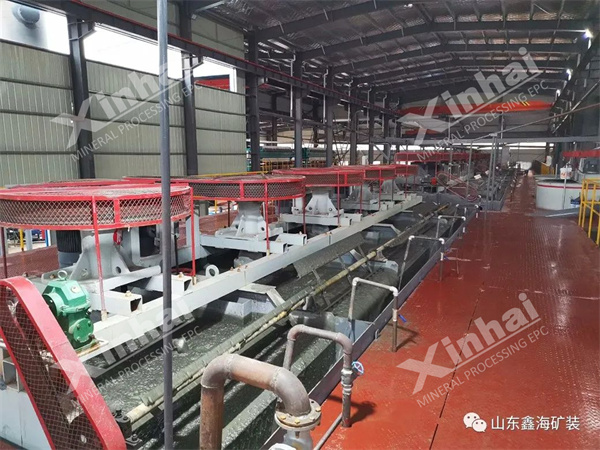The main methods used for lithium ore separation include flotation, magnetic separation, heavy medium method, combined beneficiation, etc. Among them, flotation is one of the more widely used beneficiation methods. When flotation lithium ore, the selection of collector for lithium ore is the key to affecting the flotation indicators of lithium ore. Lithium ore collectors can be divided into anionic collectors, cationic collectors, combined collectors, new collectors, etc. In this article, we will take you through various types of lithium ore collectors.

The collection mechanism of anionic collectors and lithium ores mainly depends on the combination of particles on the surface of lithium ore particles with anionic collectors. Under suitable pH conditions for single mineral flotation, anionic collectors exhibit good selectivity through electrostatic and chemical reactions on the surface of spodumene.
Common anionic collectors include sodium oleate, oxidized paraffin soap, naphthenic acid soap, sodium dodecyl sulfate, hydroxamic acid, etc. These anionic collectors act on the surface of lithium ore particles through different active groups. A single anionic collector has good selectivity, but its collection ability is weak. It can be used in combination with high valent metal ion activators under strong alkaline conditions, and the selectivity of activation can be adjusted by adjusting high valent metal cations. In addition, fatty acid collectors such as oleic acid and oxidized paraffin soap are used in large amounts during the flotation of lithium ore, making them difficult to dissolve and disperse in the slurry. Therefore, it is necessary to adjust the slurry environment to alkaline and also have temperature requirements.
Lithium cation collectors include dodecylamine, tetradecylamine, hexadecylamine and their isomers, mixed amines, and coconut oil amines, which act on the surface of lithium particles through electrostatic or van der Waals forces using amine groups. High valent metal cations and regulators are required to control the selectivity of particle activation. When conducting pure mineral flotation of lithium minerals, the flotation ability is good over a wide pH range, and the lithium recovery rate is high, but the selectivity for different minerals is poor.

The combination of different collectors can often exert greater effectiveness, resulting in co adsorption, lengthening of hydrophobic ends, and promoting adsorption. Some can improve flotation efficiency, some can increase concentrate grade, and some can reduce reagent dosage or improve flotation environment. Lithium ore combination collectors mainly include anionic and cationic combination collectors, anionic combination collectors, anionic and non ionic combination collectors, etc.
(1)Anion and cation combination collector
The combination of anionic and cationic collectors has strong synergistic effects and surface activity in lithium ore flotation, and has good collection and selectivity. The commonly used combination collectors of this type include cationic collectors with - NH2 structure and anionic collectors with - COOH structure.
(2)Anion combination collector
In lithium ore flotation, anionic combined collectors can improve the flotation environment, enhance the performance of the reagents by using anionic active groups with different structures, reduce costs, and improve concentrate indicators.
(3)Anionic and non ionic combination collectors
In the flotation of silicate lithium minerals, anionic and non ionic combination collectors can perform well. Non ionic collectors have larger molecules and when combined with anionic collectors, they serve as an enhancer to promote the dissolution and dispersion of anionic collectors in flotation solutions, reduce the critical micelle concentration of collectors, and improve flotation performance.
The new collectors used for lithium ore flotation mainly include two types: amphoteric collectors and chelating collectors. Amphoteric collectors contain both anionic and cationic functional groups, which enhance the performance of the collector due to their heterologous active group structure.
The mechanism of the flotation of spodumene by chelating collectors is that the collectors form ligand in solution and strongly bond with the metal cations Al3+, Si4+, Ca2+, etc. on the lithium surface to generate stable chelates, which mainly interact with the mineral surface in the form of surface chemical reaction and chemical adsorption, with strong collection and selection capabilities.
The above is about lithium ore flotation collectors. The collection performance of lithium ore collectors is closely related to the differences in physical and chemical properties between lithium minerals and gangue minerals. Therefore, when selecting collectors, attention should be paid to the specific properties of the ore, and suitable collectors should be selected based on the experimental results, taking into account the actual factors of the beneficiation plant, in order to achieve better economic benefits.